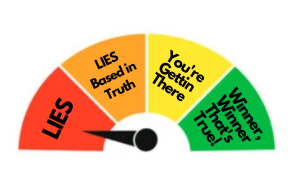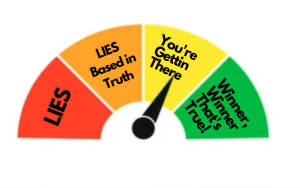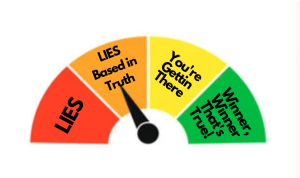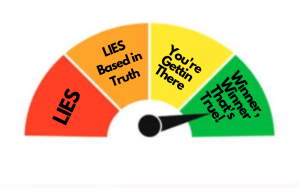NFTs: Two Truths and a Lie?
April 20, 2022
Every year there are new crazes that pop up, but few have had the sheer magnitude that the NFT trend has had. With this new fad, as with every fad when it first gains popularity, there is much confusion and disinformation. We are here however to make sure you know what information is true, a lie, or somewhere in between.
Definition of NFTs
NFTs are Non-Fungible Tokens. This means that they are all individually different and so when you buy an NFT, no one else in the world has that picture. Artists either make them themselves or code programs to construct these pictures and they are then sold on a digital marketplace.
History of NFTs
While NFTs are a “new” thing, they’re actually almost eight years old. The original NFT, “Quantum,” was made and coined on May 3, 2014 by artist Kevin McCoy. Since then, NFTs have exploded and nearly 175 million dollars have been spent on these pieces of virtual art.
You can own NFTs by screenshotting them
While someone can screenshot an NFT, this doesn’t mean that they own it and, therefore, gives them no value. There are things put in place so that someone cannot sell screenshotted NFTs as their own. In fact, Apple is in the process of making a feature that will blur an NFT if someone screenshots to further prevent theft.
NFTs have bad effects on the environment
It seems as if whenever someone is talking about NFTs, there’s someone talking about how bad it is for the environment but are these negative effects real? Research done suggests that for every dollar spent on transaction fees for NFTs, over a kilogram of CO2 is released into the environment. To put that into perspective, for every 275,000 dollars spent on NFTs, the same amount of Carbon Dioxide is released from a rocket launch. This doesn’t seem too bad until you realize that approximately 175 million dollars have been spent on NFTs since November of 2017.
NFTs are fronts for money laundering and other crimes
While crimes in the NFT realm are possible, they are highly unusual. This is no different from physical art which can also be used for money laundering and tax evasion.
NFT sellers can easily manipulate prices
All NFT transactions are anonymous so sellers can buy from themselves in order to “validate” the price and add value to their NFT. This means that they can essentially assign whatever value they want to their NFT and trick people into paying whatever they want.
NFTs aren’t even real money
To buy NFTs, someone must have ethereum. To get this, you must go to a crypto exchange website and exchange money for ethereum. Once you have ethereum that you want to convert back into money, simply go to the same crypto exchange and use your account to switch it back.
NFTs give small artists a platform to sell their artwork on
One very positive effect of the NFT craze is that small creators can sell their artwork easier than ever. It is very easy to support small artists with NFTs. In just a few clicks, you can buy a piece of artwork and the artist gets that money instantly.






